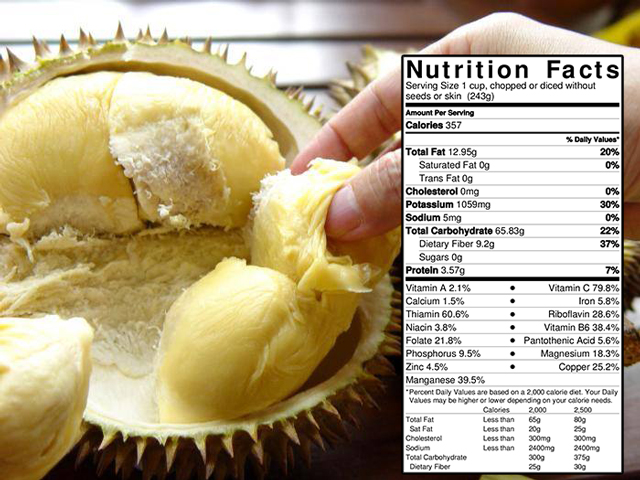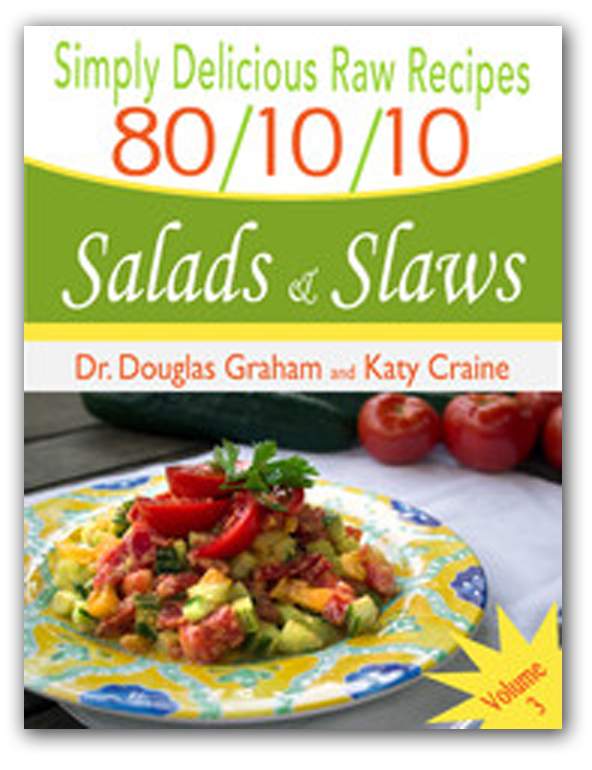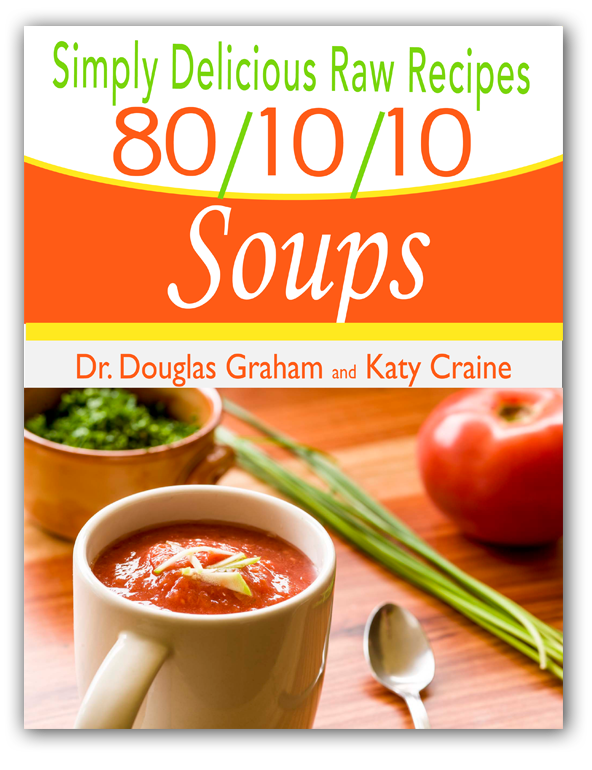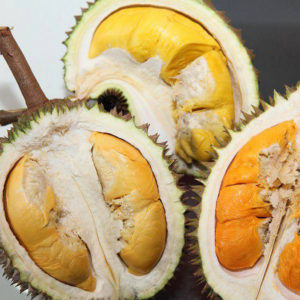
The durian has been known and consumed in southeastern Asia since prehistoric times, but has only been known to the western world for about 600 years.
Only slowly, durians are catching on in other parts of the world. They aren’t grown yet commercially on continents other than Asia, though the climate would be ideal in the Northern parts of South America, as well as sub-Saharan Africa.
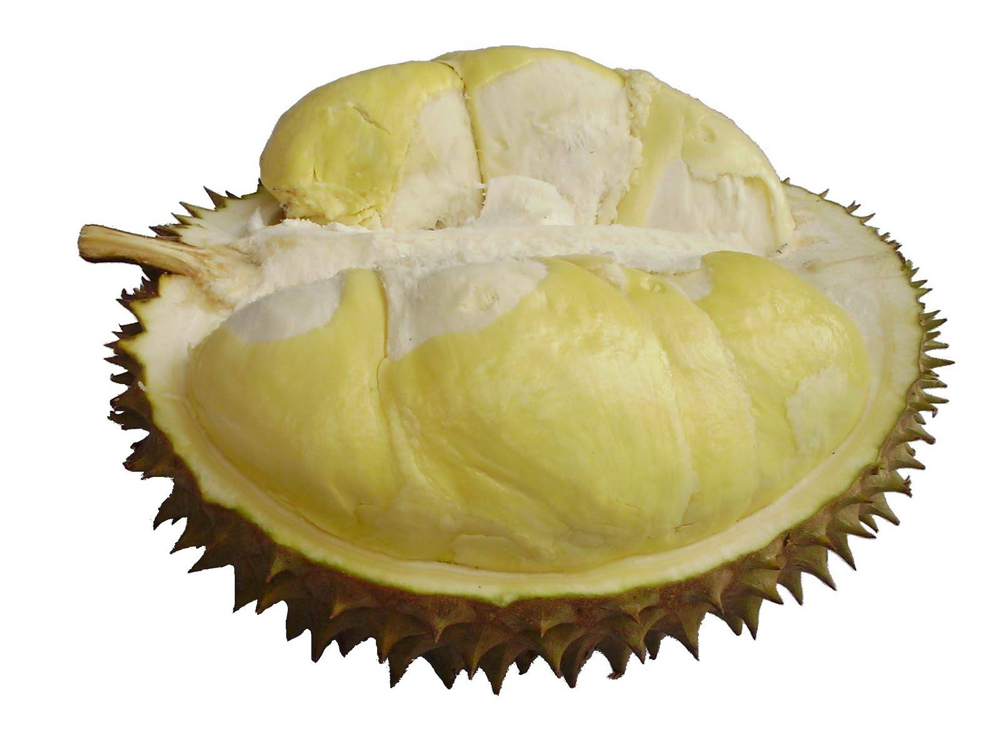
Some describe the fruit as sweet as well-kept honey. All things considered, durian has a special tempting smell. Those who have not enjoyed the fruit before may find it hard to eat. But once they have tried it, they are likely to seek it out again.
As a matter of fact, there are few culinary delicacies that have as dedicated a following as does the durian, in Southeast Asia as well as among Westerners who have tasted it. Few people would drive 10 or 20 kilometers a day for the opportunity to eat apples, or pineapples, or bananas.
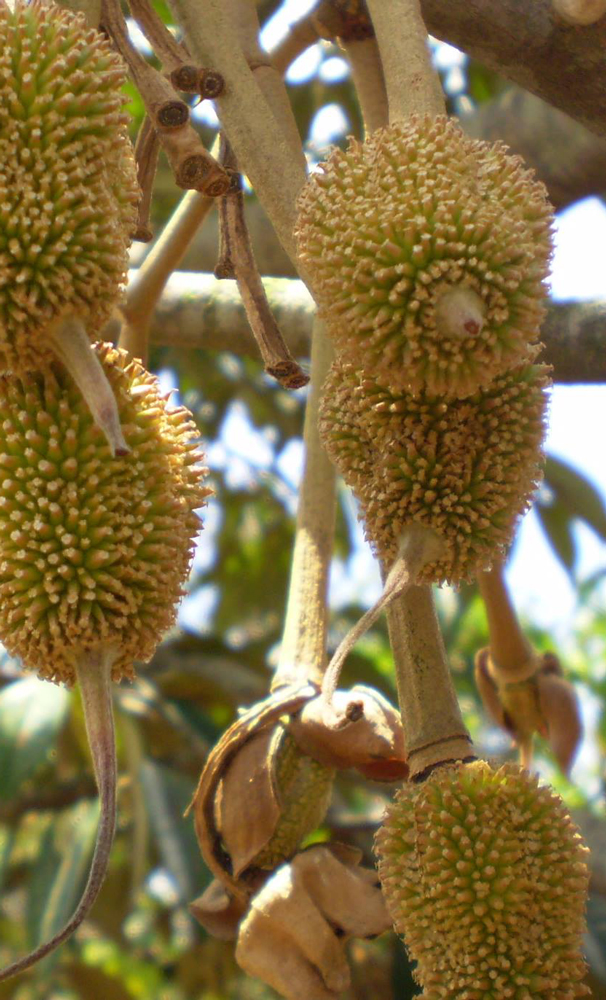
We eat these fruits when they are available… and when they are not, never mind, we eat something else. BUT to obtain durians, many people would take considerable effort. Planting their own durian trees, for example.
Durian trees are large, growing to 25–50 metres (80–165 ft) in height depending on the species. The leaves are evergreen, elliptic to oblong. The flowers are produced in three to thirty clusters together on large branches and directly on the trunk with each flower having a calyx and usually five petals. Durian trees have one or two flowering and fruiting periods per year, though the timing varies depending on the species, cultivars, and localities. A typical durian tree can bear fruit after four or five years.
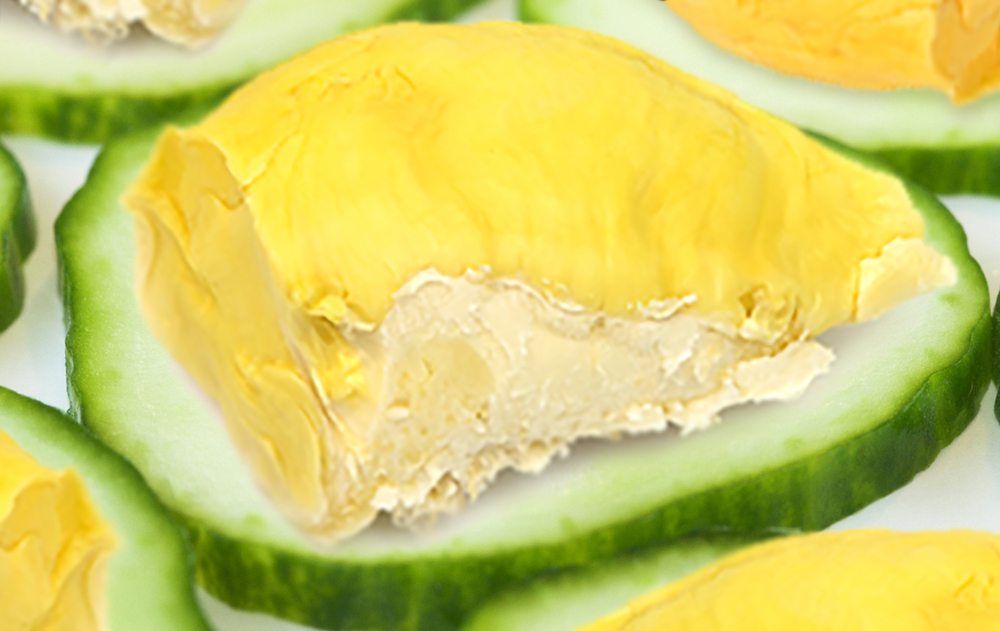
Ingredients:
Durian
Cucumber
Directions:
-
-
- Separate durian flesh from seeds and rind and place it into a bowl.
-
-
-
- Slice cucumbers into thin discs.
-
-
-
- Place some durian flesh (separate large pods if necessary) onto each piece of cucumber, then place these on serving platters.
-
-
- Treat your guests to this entrée – see if they can resist!
